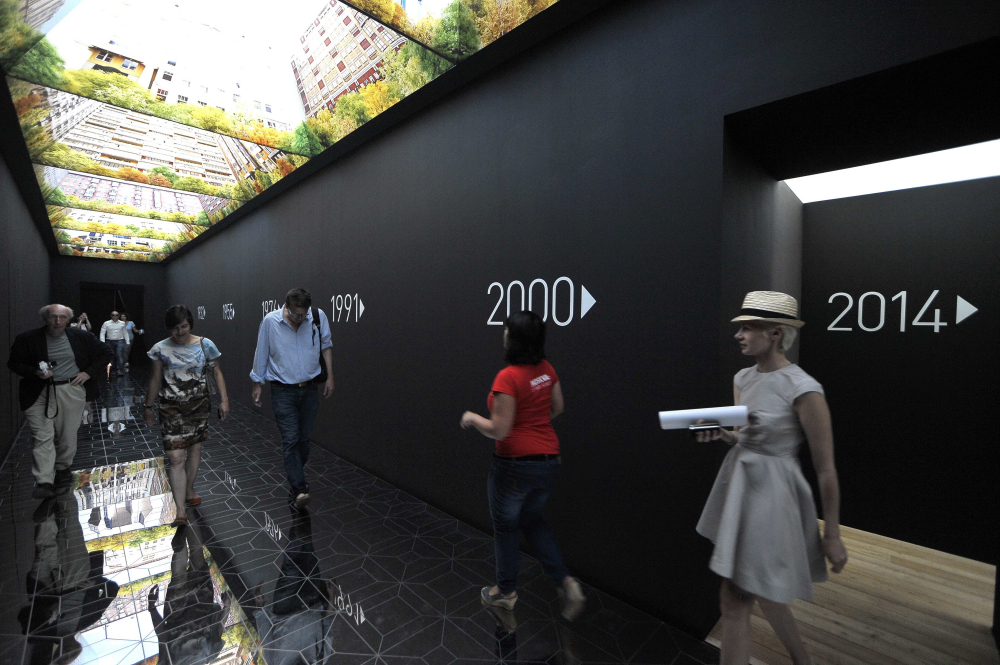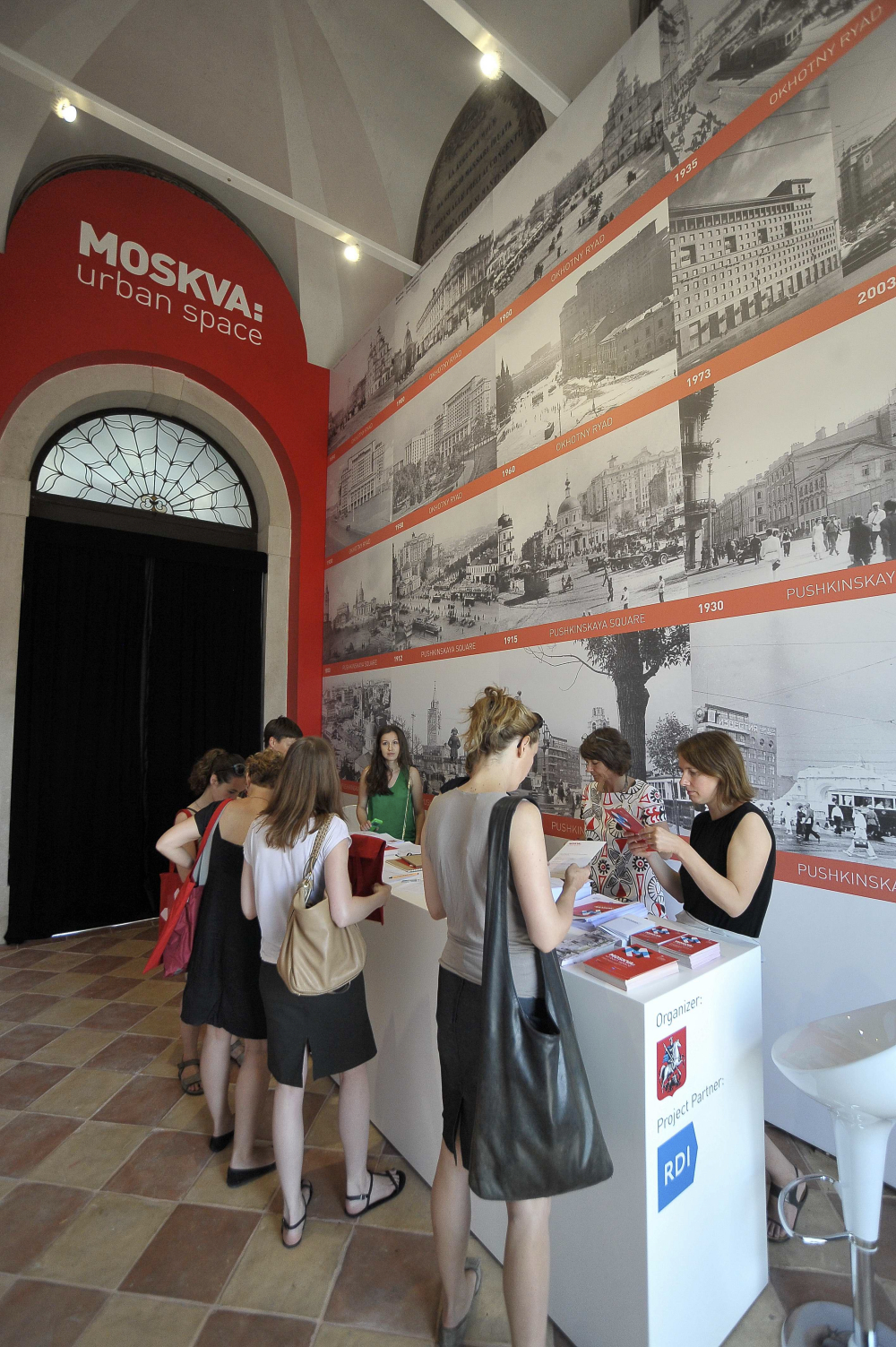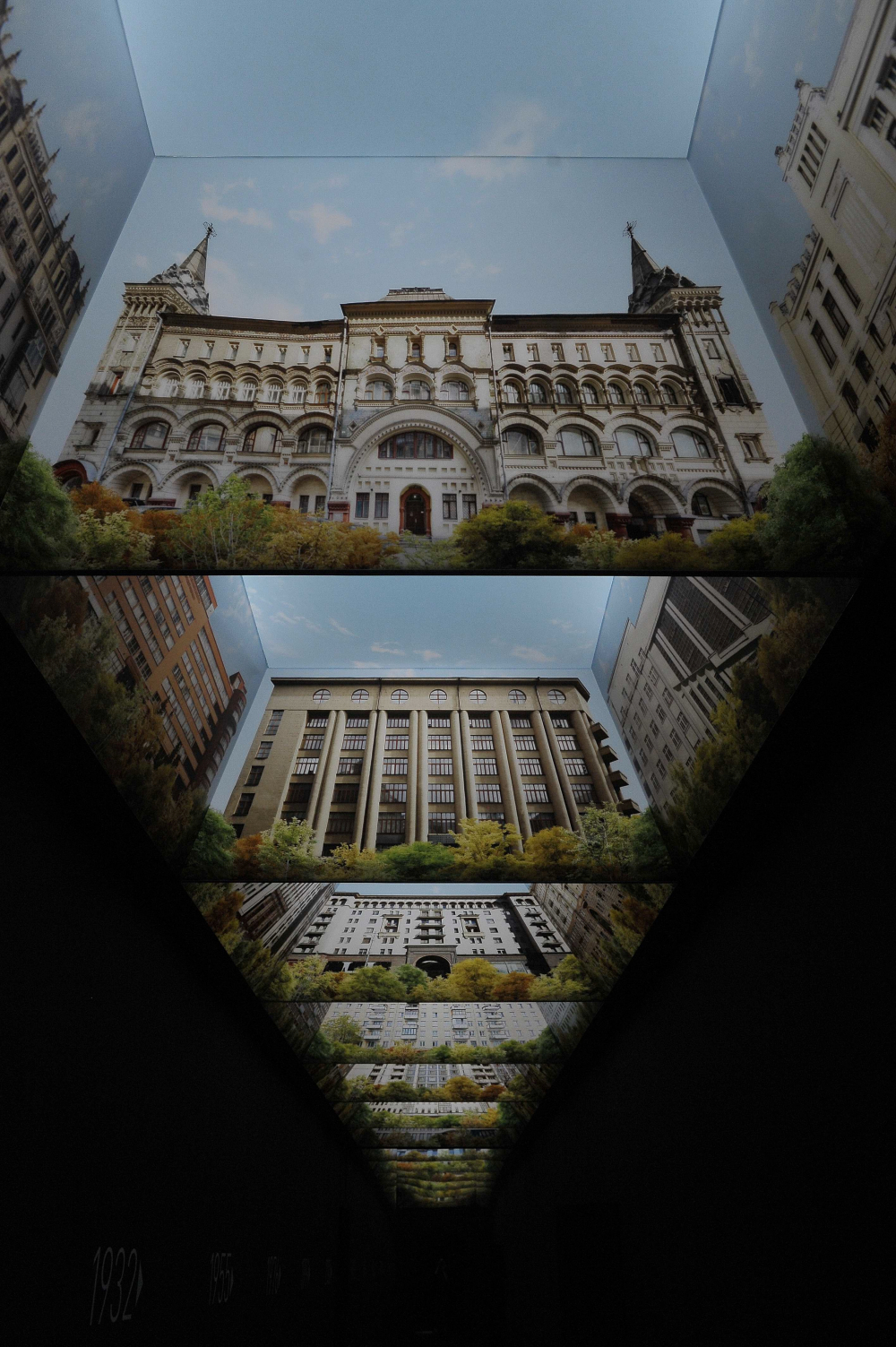MOSKVA: urban space. Shifts in history
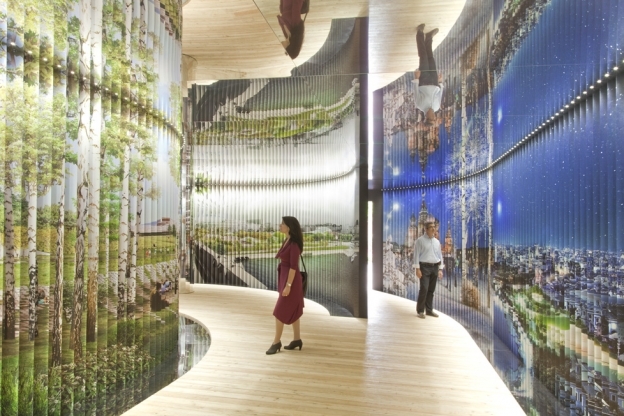
The exhibition project “MOSKVA: urban space” is a collateral event of the 14th Venice International Architecture Biennale (June 7 — November 23, 2014) and is inspired by the theme of the current Biennale — Fundamentals.
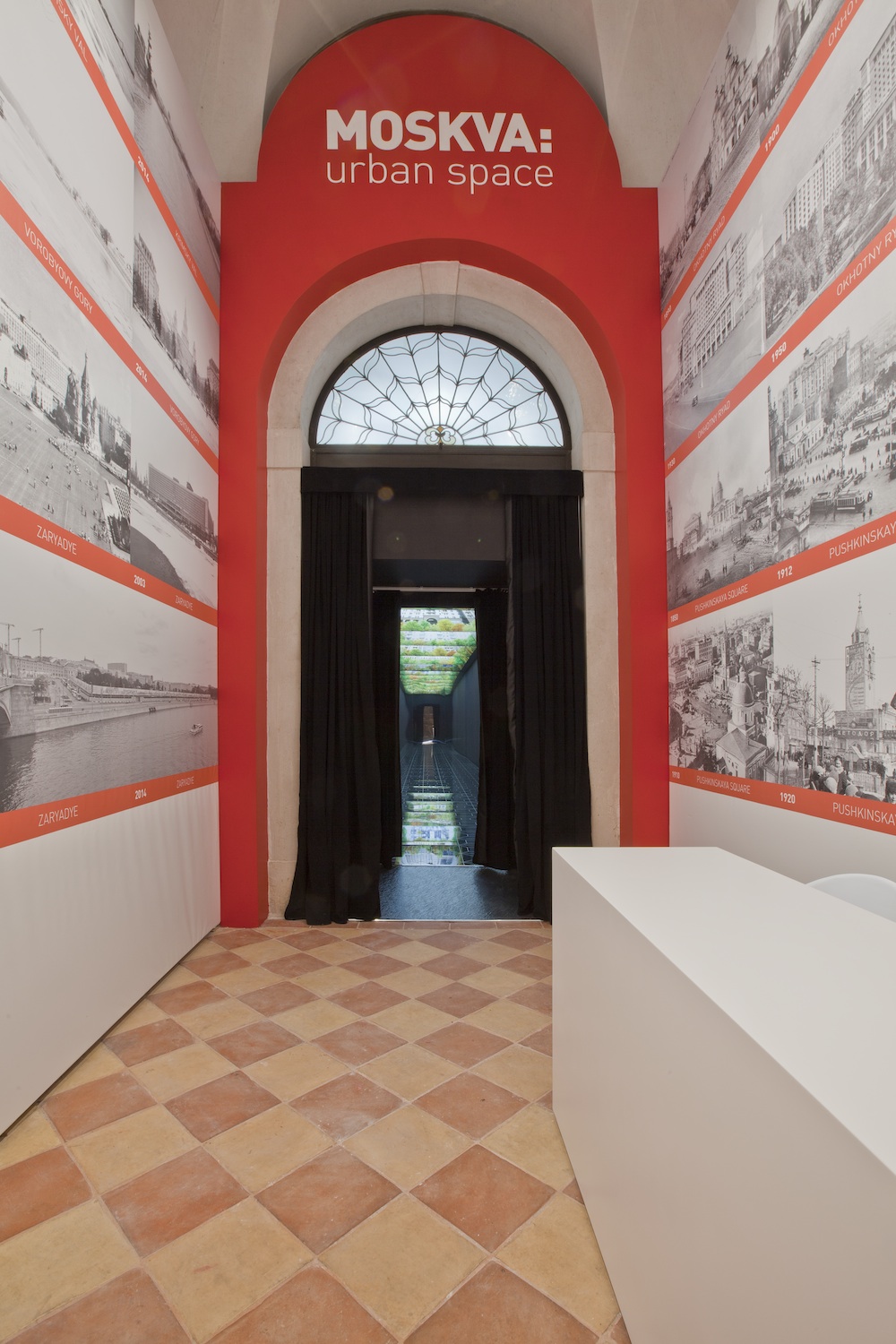
The focus of the project is the Russian capital, the evolution of urban policy in the city, and the internal changes that have occurred in this sphere over the last hundred years. Also covered are current strategies and tactics to meet the challenges of today, providing a means of not only solving the most pressing problems, but also developing the potential of Russia’s largest metropolis.
Facets of History
The exposition takes place in the exhibition halls and courtyards of the Venetian church of Santa Maria della Pieta, covering a total of approximately 700 square meters and playing with a variety of exhibition spaces. This is a kind of journey through the history of Moscow’s architecture in the last hundred years.
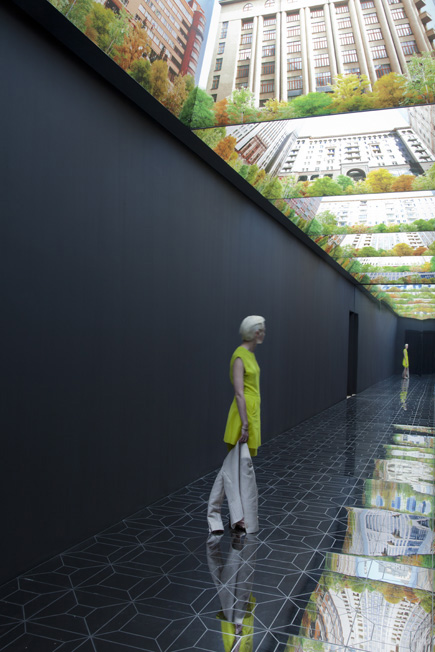
Old Moscow appears before the audience in a darkened room: on the ceiling six prisms are hung upside down and on the facets are photographs of iconic buildings — such as experimental housing complexes of the avant-garde era, colossal palaces from the heyday of Stalin’s empire style or typical buildings of the modernist era.
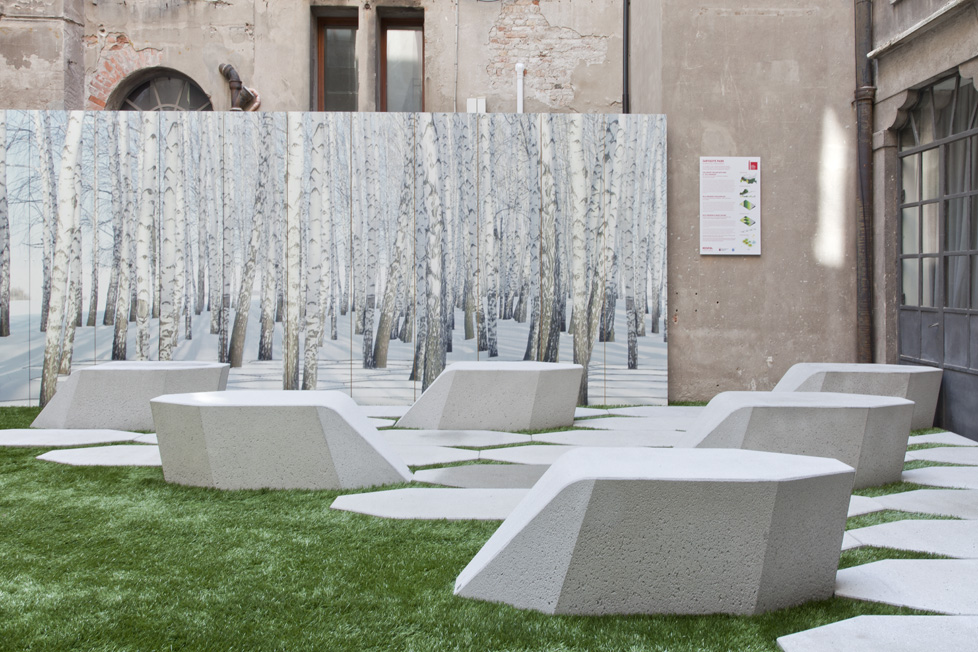
Narrating Moscow’s current architectural context, the creators of the exhibition have focused on urban public spaces, best exemplified by the ambitious project of Zaryadye Park which will soon appear in the center of Moscow. Participating directly in this portion of the project was the architectural bureau of Diller Scofidio + Renfro — authors of the concept which won the international competition. A recreated fragment of the future park showcases Moscow’s central park of the 21st century.
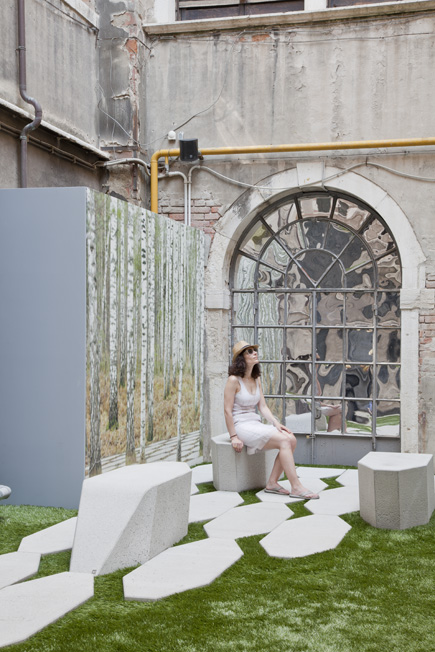
100 Years of Moscow Architecture
On the eve of the First World War Moscow was a rapidly growing business capital of the Russian Empire. The architecture of railway stations, hotels, banks, residential buildings, along with the neoclassical and neo-Russian style decoration of these buildings, existed side by side with new technologies being introduced at the time, as well as new approaches to building layouts.

In the 1920s, Moscow considered itself not only as the capital of the world’s first proletarian state, but also a beacon of world revolution. The avant-garde architecture which appeared here arose due to entirely new forms of social life and due to the challenges it had to solve.
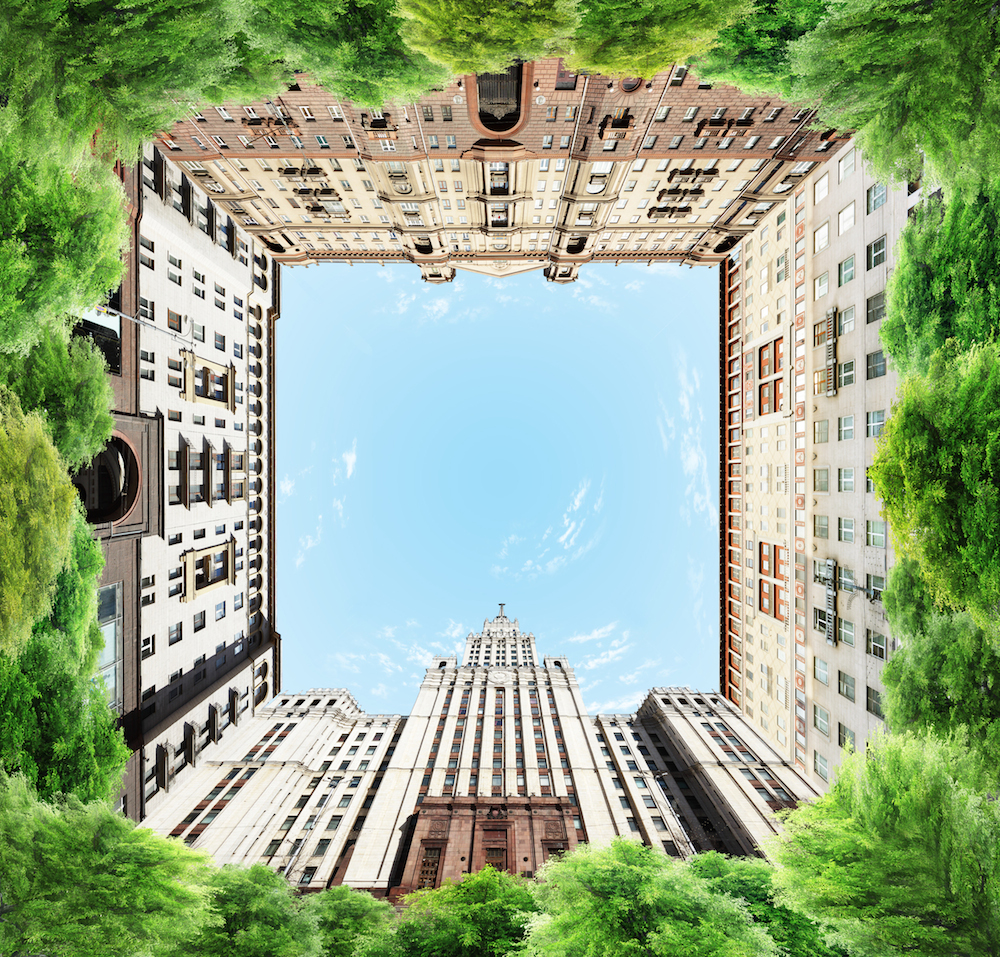
In 1932 in the trajectory of the development of local architecture, there is a significant switch to the “revival, the return of classical heritage,” which directed professionals in architecture and urban planning to create the city’s architectural image as victorious socialism using historical forms.

1955 marked the next shift — this time to industrial construction. The main task of architects became to find a way to provide every Soviet family with a separate apartment in the shortest possible time.
The collapse of the Soviet Union in 1991 spawned nostalgia for pre-revolutionary times and their aesthetics. The capital of post-Soviet Russia was full of columns and turrets, but the culture of working with historical forms in architecture that existed before 1917, by that time was already lost.

Since the beginning of the new millennium, Moscow has been seeking to match other world cities. Already taking shape in the post-Soviet era, a generation of architects is now using the same language as their colleagues from countries where the development of architecture has had a less dramatic journey. Such buildings have emerged as the Novatek office building (2011, SPEECH), Tsvetnoy shopping centre (2010, Project Meganom), Copper House residential building (2004, architect Sergei Skuratov), and Wall Street business center (2014, Reserve).
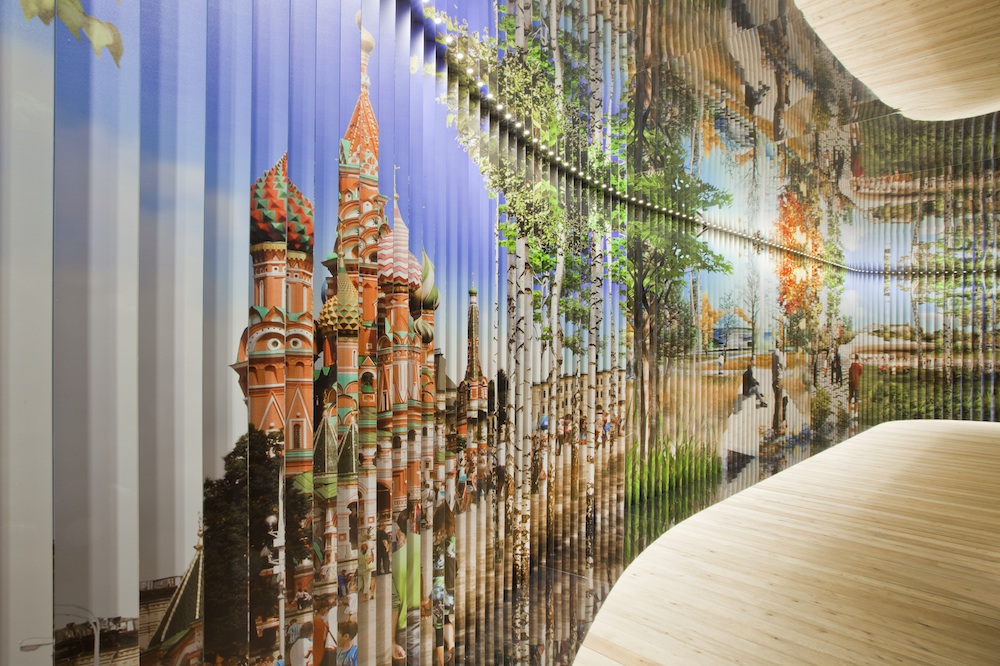
In early 2011, investment contracts for the development of open urban spaces in Moscow were severed, construction of office buildings in the historic center was frozen and the demolition of cultural heritage sites suspended. At the same time, the city government launched a comprehensive project to solve transport problems.
Consequently, today’s socio-economic and cultural situation in Moscow gives us a unique opportunity to reflect on the changes in the field of urban environment creation that have taken place here over the last hundred years and try to predict the direction of future development of this metropolis.
.jpg)
New Shift
Among the projects that have initiated a new direction in the city’s urban planning policy are new pedestrian areas, the development of a special design-code for streets and squares, and the construction of a new generation of social housing and many more. Especially effective tools in the assignment of important architectural commissions that have ushered in a qualitative change in the urban environment are international architectural competitions.
In 2013 alone, more than 10 competitions were held in Moscow, including projects for the new building of the Tretyakov Gallery, the new buildings of the National Centre for Contemporary Arts (NCCA) and the multifunctional complex in the international business center at Moskva-City, the reorganization of the “Hammer and Sickle” factory territory, and the development of the future International Financial Center (IFC) in the Rublyovo-Arkhangelskoe region of Moscow. And of course Zaryadye Park, which not by coincidence symbolizes the future of Moscow at the Venice exhibition.
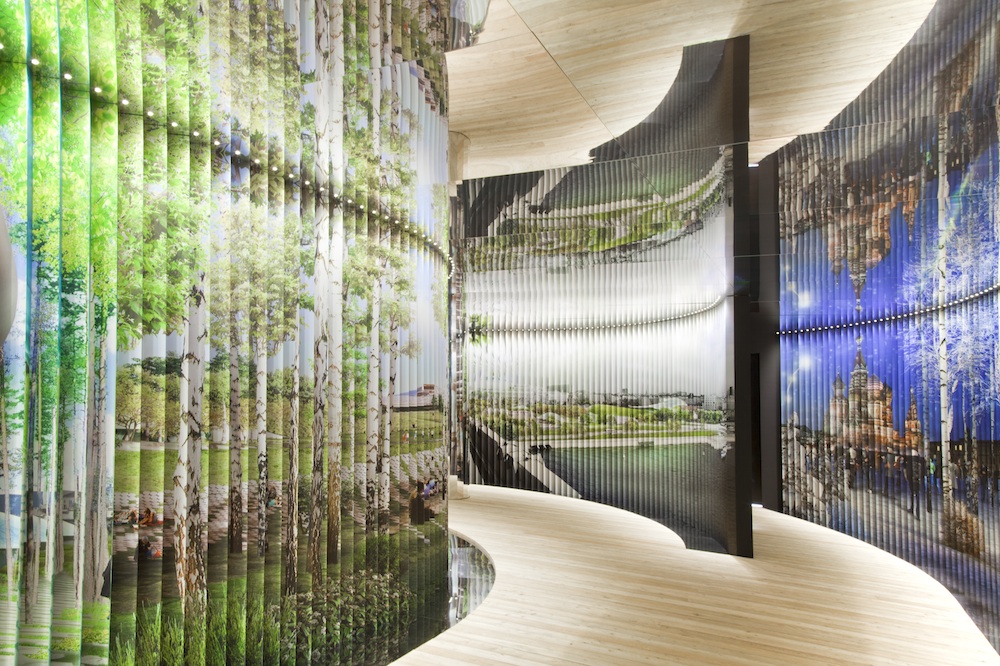
This new series of international architectural competition represents an important shift in urban planning strategy which has been adopted by the Moscow government. The driving force and catalyst behind these developments is the collaboration between Moscow Mayor Sergei Sobyanin and the City Government with the Chief Architect of Moscow, Sergey Kuznetsov. During Kuznetsov’s first year in office, the city initiated no less than 20 international competitions in the areas of architecture, planning, urban development, infrastructure and traffic planning. To date, another 30 such contests are planned.
From the projects submitted to the competitions, the city is striving to draw out diversity, quality, and innovation. The international pool of selected participants enables the emergence of a new culture of international exchange, which through workshops and strategic cooperation supports expert knowledge and the introduction of new ideas.
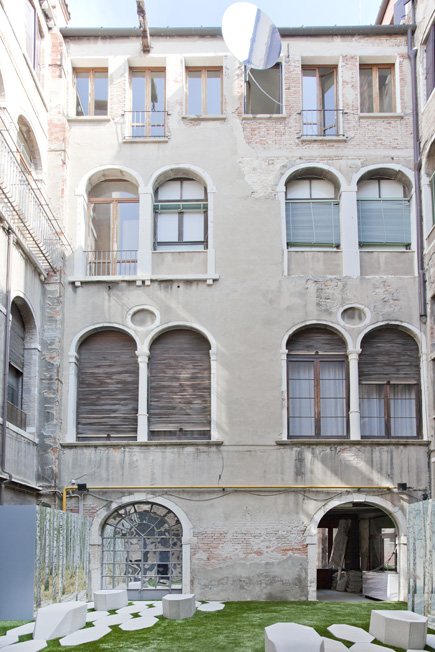
Public Space as a Means of Creating Urban Identity
Another driving force of Moscow’s new construction policy is transparent management of many projects and the participation of citizens — for the first time in the capital’s history! — in public discussions and debates about the future image of the city. “It’s not the architects that create cities and architecture; it’s the citizens, irrespective of the government model,” emphasized Sergey Kuznetsov, who as the chief architect of Moscow, is also the curator of the exhibition.
Today Moscow architecture is developing in a new framework, obeying new principles and rules of the game: new public spaces are being created in the city, the value of a building is now measured based on its social function, and planning of contemporary residential quarters is unfolding. Taking center stage is the individual — it is the person and his needs that are the focus of the Architecture Biennale’s Fundamentals, devoted to the development of modern architecture and urbanism, creating spaces for people and for the benefit of people.

“While the face of Moscow in the past 100 years was largely determined by the architecture of its buildings, representing political and economic developments, today’s urban singularity is based on the ‘connective tissue’ of its public spaces that have become equally important identity-makers and contributes significantly to improving the quality of urban life for its citizens.”
This is another reason why the project of Zaryadye Park in the context of the future Moscow is most representational. The main element of any city park is traditionally considered to be a green space with a manmade landscape, while new, modern features of parks and the requirements of the public, which parks seek to satisfy, present designers with completely new challenges.
In Moscow today one can observe a shift of generations. The younger generation, as more modern and knowing firsthand the importance of social “horizontal” relationships within the metropolis, are increasingly turning to city authorities with the request to create public social spaces, to improve the quality of life and level of comfort. The city is responding to these requests with the creation of public spaces for recreation, creativity and fruitful dialogue.
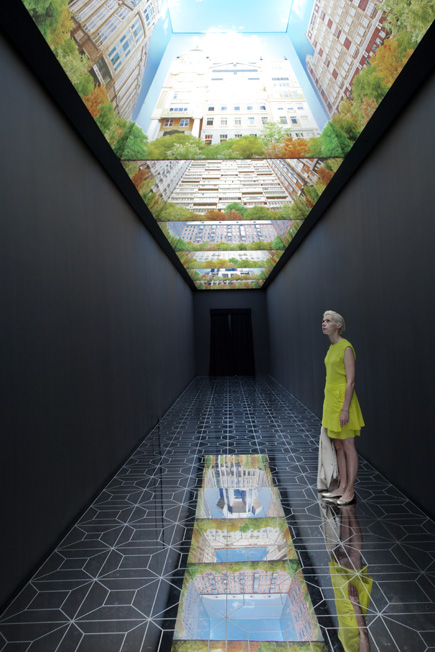
New approaches to the planning of urban spaces has transformed the Russian capital into one of the most relevant and interesting areas for the discussion of the problems and prospects of urban development, attracting to the city the world’s leading architects, designers and planners in the field of urban planning.
Residents, architects and the municipality are playing equally important roles in urban planning. Architects are actively involved in the design process, citizens in the discussion and decision-making, and city authorities in the management of the implementation process. This system is currently operating in Moscow, based on articulated motivation and on reasonable, thought-out organization of the whole process with the participation of all parties involved.
“MOSKVA: urban space” was organized by the Committee for Architecture and Urban Planning of Moscow (curator of the exhibition — the Chief Architect of Moscow, Sergey Kuznetsov), with the support of the Government of Moscow and RDI (Commissioner of the pavilion — founder of RDI, philanthropist and collector, Dmitry Aksenov). Art Consultant — architectural critic and expert Kristin Feireiss. Exhibition and design production — TRIAD Berlin.
A detailed press release can be found on exhibit’s website.
- Tags:
- events |
- exhibitions |
- Sergey Kuznetsov |
- Biennale |
- MOSKVA



